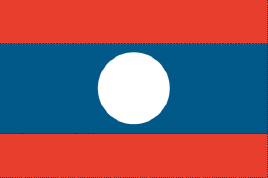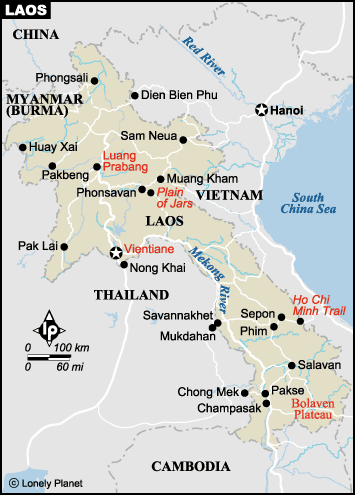| |
| |
| |
| |
| |
| |
| |
| |
| |
| |
| |
| |
| |
| |
| |
| |
| |
| |
| |
| |
| | | | | | ||||||

we went biking, caving, canoeing, and tubing in spectacular settings, and stayed
with an isolated Hmong hill tribe village on an overnight trek. We also visited the
sleepy capital town of Vientiane and Luang Prabang, a Unesco World Heritage
Site. To be connected to each destination's webpage, please click on the
photos below, or use the navigation bar at the top of the page.

the Mekong, and it’s
probably the most laidback
capital city I’ve ever seen.

to Luang Prabang is
Vangvieng, a mecca for
backpackers and adventure
sports enthusiasts. While
there, we indulged in
tubing, biking, and caving
(spelunking?).

its UNESCO "World
Heritage City" status for
nothing--it is quite
appealing.

most primitive places I’ve
every seen. Despite its
utter lack of any modern
amenities, it has its charm.

an overnight trek to visit
a Hmong hill tribe village.
We reached the village
after a brutal six hour
hike, and what we found
at the top of the mountain
was fascinating.
Republic
Area: 236,000 sq km
Population: 5.5 million
People: 50% Lao Loum (lowland Lao), 30%
Lao Theung (lower-mountain dwellers of
mostly proto-Malay or Mon-Khmer descent),
10-20% Lao Sung (Hmong or Mien
high-altitude hill tribes) and 10-20% tribal Thais
Language: English, Lao, French
Religion: 60% Buddhist, 40% animist and spirit
cults
Government: communist state
Head of State: President Khamtai Siphandon
Head of Government: Prime Minister
Boungnang Vorachith
GDP: US$9.7 billion
GDP per capita: US$1,700
Annual Growth: 4%
Inflation: 6%
Major Industries: Rice, tobacco, coffee, tin
mining, timber and opium
Major Trading Partners: Thailand, Vietnam,
Malaysia, Japan
